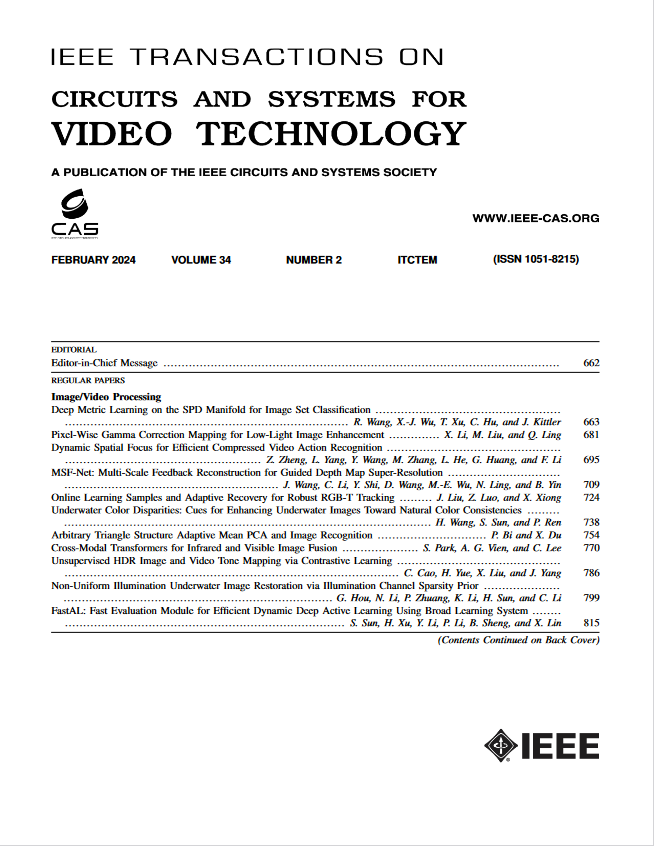All-Inclusive Image Enhancement for Degraded Images Exhibiting Low-Frequency Corruption
IF 8.3
1区 工程技术
Q1 ENGINEERING, ELECTRICAL & ELECTRONIC
IEEE Transactions on Circuits and Systems for Video Technology
Pub Date : 2024-09-23
DOI:10.1109/TCSVT.2024.3465875
引用次数: 0
Abstract
In this paper, a novel image enhancement method, called the all-inclusive image enhancement (AIIE), is proposed that can effectively enhance the degraded images for improving the visibility of image content. These imageries were acquired under various types of weather conditions such as haze, low-light, underwater, and sandstorm, etc. One commonality shared by this class of noise is that the resulted degradations on visual quality or visibility are caused by low-frequency interference. Existing image enhancement methods lack the ability to deal with all types of degradations from this class, while our proposed AIIE offers a unified treatment for them. To achieve this goal, a statistical property is obtained from the study of the discrete cosine transform (DCT) of 1,000 high- and 1000 low-quality images on their DCT domains. It shows that the normalized DCT coefficients (between 0 and 1) of high-quality images has about 95% fall in the interval [0, 0.2]; for low-quality images, almost all the coefficients are in the same interval. This fundamental property, called the DCT prior (DCT-P), is instrumental to the development of our AIIE algorithm proposed in this paper. Since the proposed DCT-P delineates the attributes of high- and low-quality images clearly, it becomes a highly effective ‘tool’ to convert low-quality images to its enhanced version. Extensive experimental results have clearly validated the superior performance of the AIIE conducted on different types of deteriorated images in terms of visual quality and efficiency as well as significant advantages on computational complexity, which is essential for real-time applications.求助全文
约1分钟内获得全文
求助全文
来源期刊
CiteScore
13.80
自引率
27.40%
发文量
660
审稿时长
5 months
期刊介绍:
The IEEE Transactions on Circuits and Systems for Video Technology (TCSVT) is dedicated to covering all aspects of video technologies from a circuits and systems perspective. We encourage submissions of general, theoretical, and application-oriented papers related to image and video acquisition, representation, presentation, and display. Additionally, we welcome contributions in areas such as processing, filtering, and transforms; analysis and synthesis; learning and understanding; compression, transmission, communication, and networking; as well as storage, retrieval, indexing, and search. Furthermore, papers focusing on hardware and software design and implementation are highly valued. Join us in advancing the field of video technology through innovative research and insights.

 求助内容:
求助内容: 应助结果提醒方式:
应助结果提醒方式:


